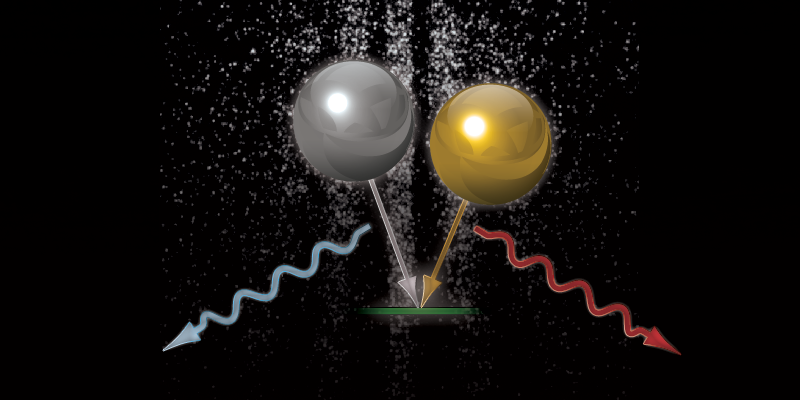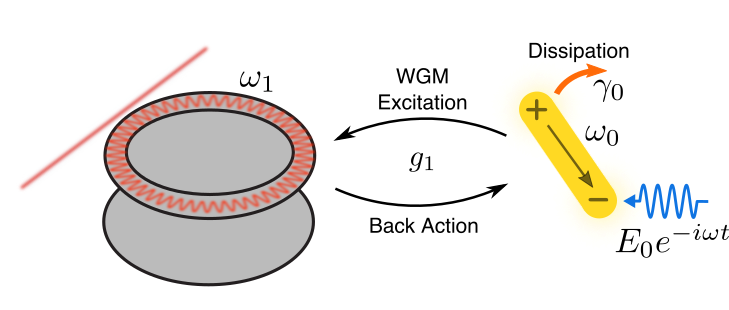
My graduate school research focused on developing mathematical models for manipulating charge and light at the nanoscale. For a comprehensive list of my publications, take a look at my Google Scholar profile or my CV. On this page, I’ll just highlight some projects I really enjoyed.
Microresonators as platforms for nanoscience

I worked in collaboration with the Goldsmith group at UW Madison on understanding how whispering-gallery-mode-supporting microresonators can be used to make photothermal measurements of the optical properties of nanoscale systems and single molecules. This work was featured on C&E News and Nature News and Views.
For this project, I developed a dynamical systems model of the interaction between plasmonic particles and whispering gallery modes that can be used to statistically infer near-field properties of this hybrid system from my collaborators’ experimental data. As we show in a Nature Photonics article, these interacting systems support so-called Fano resonances, an interesting interference effect that my old group is continuing to study.
From classical to quantum plasmonics

I also worked on understanding how nanoparticle optical properties change as particles decrease in size and quantum effects become significant. At these small sizes, collective electron oscillations, called plasmons, can easily decay into single electron excitations in a process known as Landau damping. Understanding and manipulating this process would facilitate optical manipulation of individual electrons on extremely small length scales.
Modeling how environmental changes, from substrates to the presence of other optical emitters, effect this process is critical to manipulating it. In grad school, I created a model that agrees with published experiments and can be used to predict the optical properties of quantum-sized metal structures. For a detailed look, check out the Rapid Communications we published. There, you’ll find details of the model, comparisons to data, and some general thoughts about nanophotonics.